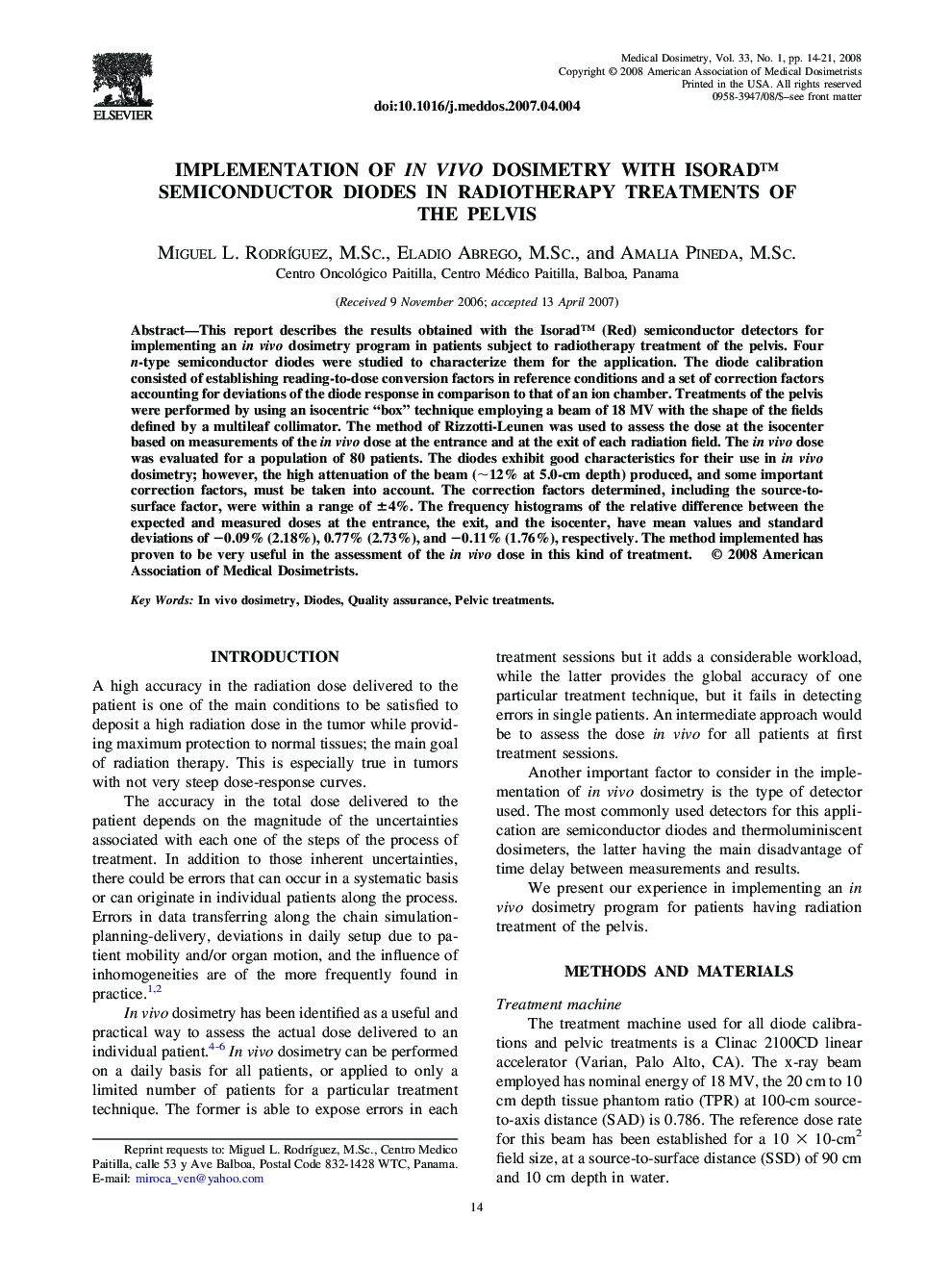| Article ID | Journal | Published Year | Pages | File Type |
|---|---|---|---|---|
| 1880162 | Medical Dosimetry | 2008 | 8 Pages |
Abstract
This report describes the results obtained with the Isorad⢠(Red) semiconductor detectors for implementing an in vivo dosimetry program in patients subject to radiotherapy treatment of the pelvis. Four n-type semiconductor diodes were studied to characterize them for the application. The diode calibration consisted of establishing reading-to-dose conversion factors in reference conditions and a set of correction factors accounting for deviations of the diode response in comparison to that of an ion chamber. Treatments of the pelvis were performed by using an isocentric “box” technique employing a beam of 18 MV with the shape of the fields defined by a multileaf collimator. The method of Rizzotti-Leunen was used to assess the dose at the isocenter based on measurements of the in vivo dose at the entrance and at the exit of each radiation field. The in vivo dose was evaluated for a population of 80 patients. The diodes exhibit good characteristics for their use in in vivo dosimetry; however, the high attenuation of the beam (â¼12% at 5.0-cm depth) produced, and some important correction factors, must be taken into account. The correction factors determined, including the source-to-surface factor, were within a range of ±4%. The frequency histograms of the relative difference between the expected and measured doses at the entrance, the exit, and the isocenter, have mean values and standard deviations of â0.09% (2.18%), 0.77% (2.73%), and â0.11% (1.76%), respectively. The method implemented has proven to be very useful in the assessment of the in vivo dose in this kind of treatment.
Related Topics
Physical Sciences and Engineering
Physics and Astronomy
Radiation
Authors
Miguel L. M.Sc., Eladio M.Sc., Amalia M.Sc.,
